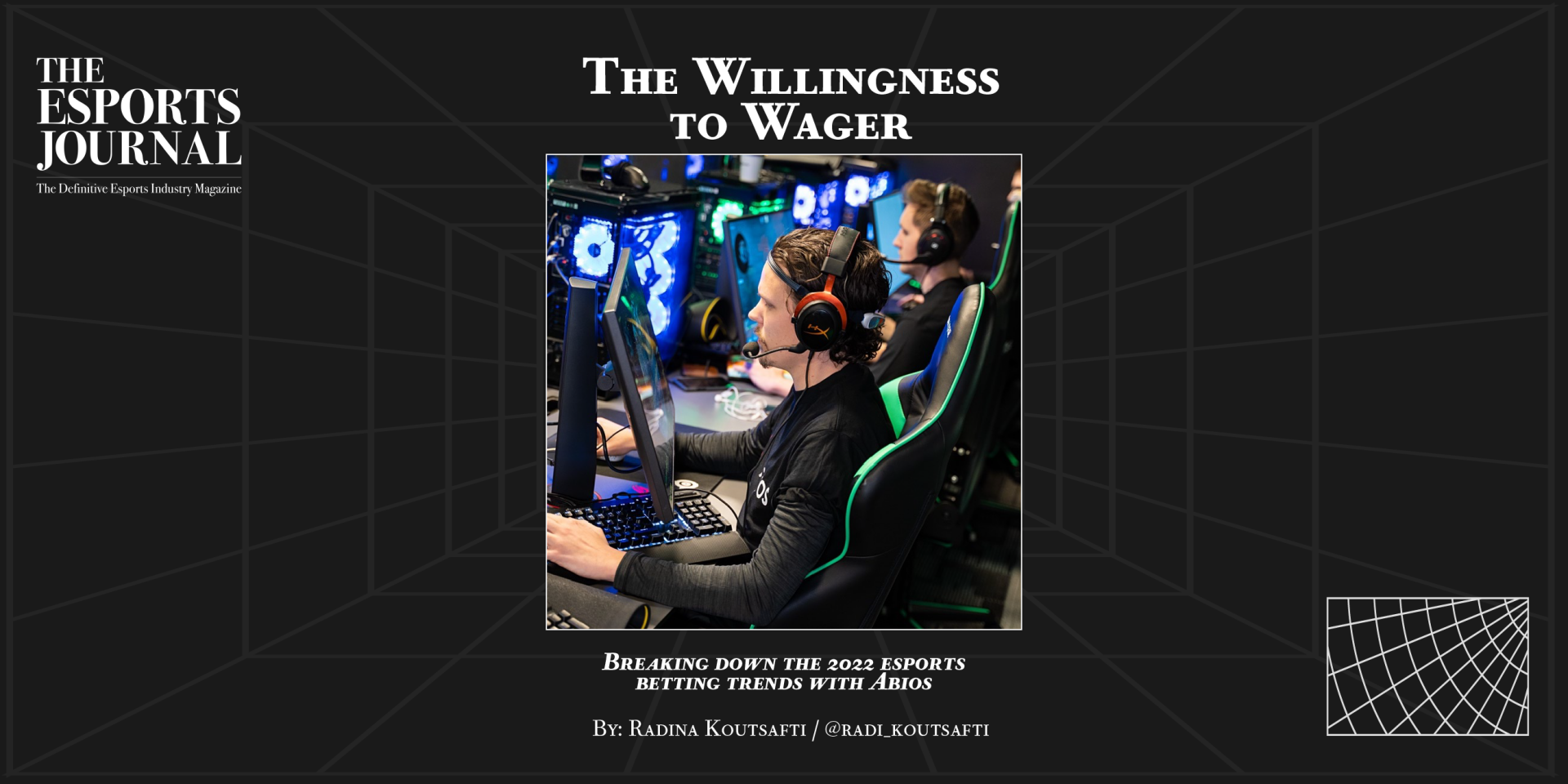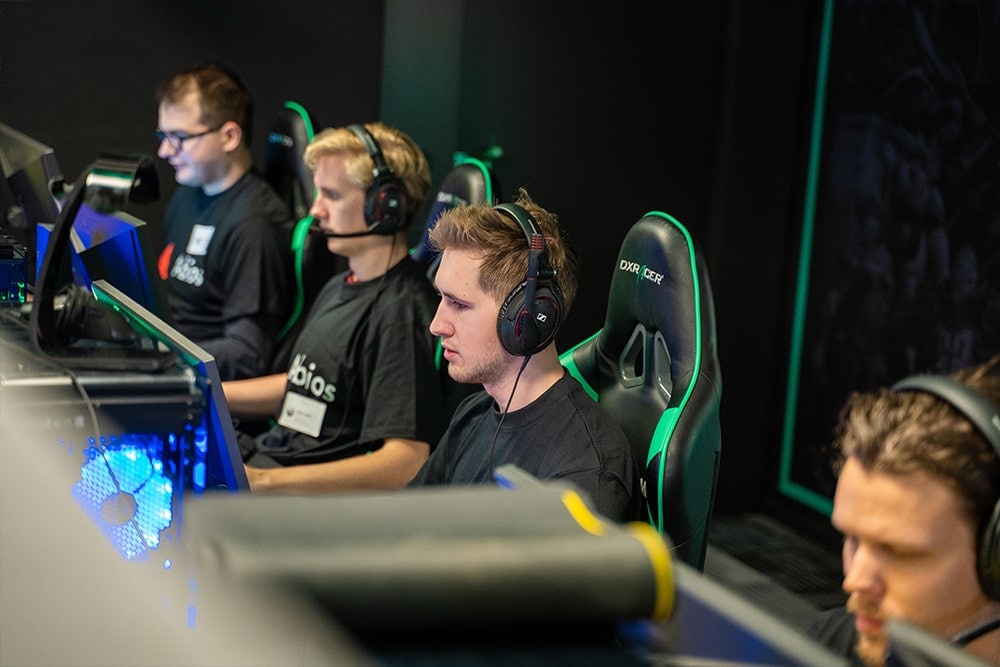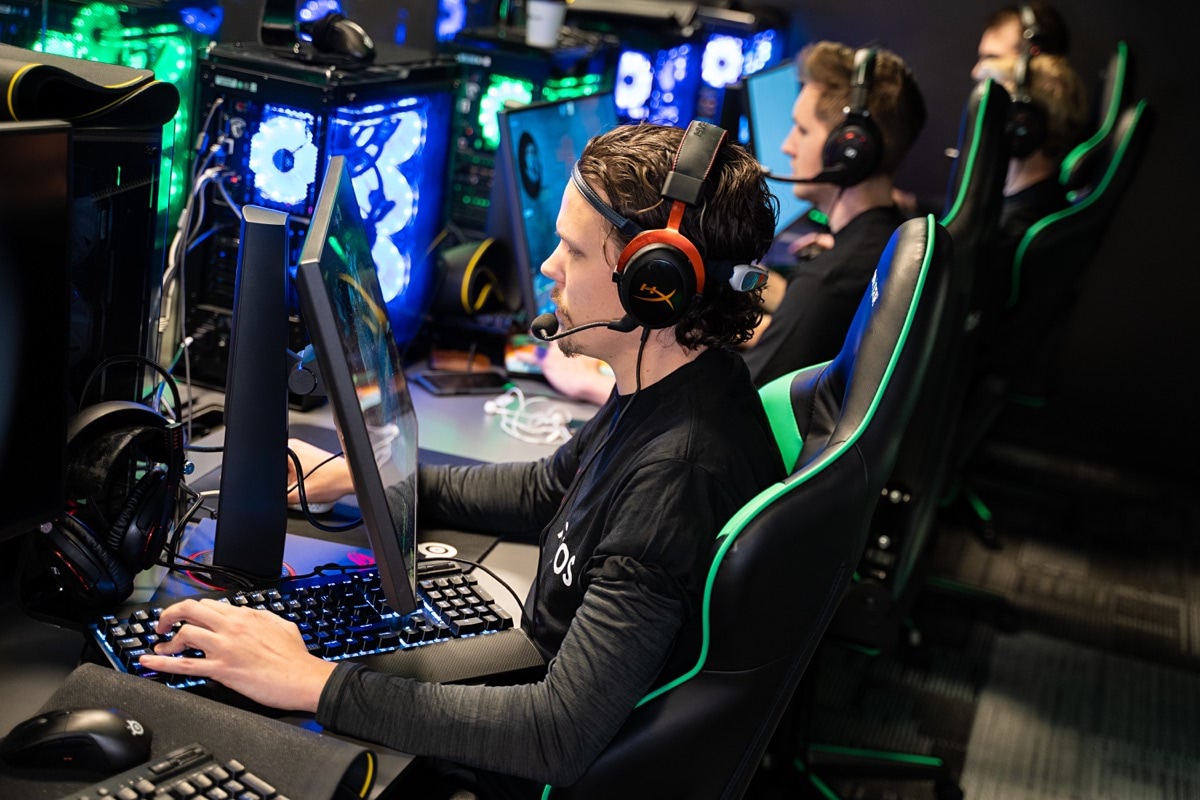
The growth levels of esports betting have somewhat stabilised after a pandemic-induced spike. Nevertheless, more sportsbooks have realised the potential of esports and picked it up as part of their offering, which has led to a higher demand for better products.
In the past, the industry has battled the perception of video games and esports being a pastime for kids: a customer group with low purchasing power. However, as the attention to industry also had a pandemic-induced spike, it became evident that its audience is in fact older and more diverse.
Specifically, 30 percent of esports viewers in the US are 25 to 34 years old, according to a study by audience targeting company GlobalWebIndex. The mean average age of an esports fan in the US is 32, making the sector an all the more interesting demographic for sportsbooks and other stakeholders. Moreover, over 450 million people watched esports in 2021 — a figure that’s estimated to hit 577 million by 2024 as highlighted by data analytics company Statista.
To further explore what betting trends are set to emerge to drive demand in 2022, and how the esports and gaming market will evolve, The Esports Journal spoke with Tomas Ericsson, Abios’ VP of Odds.
The real-time betting experience
The digital nature of esports puts it in a unique position in the betting space. Every in-game action and movement can be captured as data points from the game’s servers. This creates opportunities for engaging live markets to emerge that simply aren’t possible in traditional sports betting. However, for this to become a reality, the industry must solve the issue of latency, Ericsson explained.
Esports is usually consumed on streaming platforms such as Twitch or Youtube, amassing 1.6 billion and 517 million hours of esports live-streams watched respectively in 2021. In most games, parts of the map are obscured so competing teams aren’t able to see the opponents’ movement at any given point in time. To prevent teams and coaches from peeking behind the curtain through the match’s live streams (known as ghosting), video feeds are often delayed by 30-90 seconds.
To be able to create a real-time betting experience, real-time data directly from the server is essential. If someone offers odds or streams faster than the esports video feeds, it could lead to match-fixing.
“Conversely, if creating odds on delayed data, a sportsbook can open itself up for arbitrage opportunities, provided there are other distributors on the market that have access to faster data,” Ericsson added.
This is something that the industry should preferably address as a whole, as it currently affects all sportsbooks and suppliers operating in the esports space.

RELATED: The next level of merchandising: We Are Nations’ push for apparel prominence
The emergence of mobile esports
Mobile esports made quite the entrance in 2021. According to Statista, its global market value is expected to hit $1.15bn (~£844m) by 2025. How can the esports betting sector take advantage of mobile esports’ rise in popularity and profitability?
One way the betting industry could benefit from mobile esports — reaching into new markets and demographics — is through its audience which is usually located outside of Western esports markets.
As big of an opportunity as this is, it brings its own set of challenges. For example, many regions in which mobile esports are experiencing the highest growth figures don’t have regulated betting. These include India, Southeast Asia, and Brazil — where titles such as Mobile Legends: Bang Bang (ML:BB) and Arena of Valor have rapidly developed emerging regional esports ecosystems.
The increase in internet traffic displayed on mobile devices has led to websites, online services and applications to move towards mobile-first interfaces — including betting companies. A prime example of this in the tech industry would be when Meta CEO Mark Zuckerberg redirected Facebook to focus on mobile in early 2012. He started working almost exclusively through his mobile device, in an attempt to cater to the demand of mobile-based users.
“People enjoying mobile esports on mobile devices should be able to find a sportsbook catering to their needs,” Ericsson said. “In terms of betting products being inclusive to mobile esports, they already are. Many games correspond to or are very similar to titles in computer-based esports. For example, Garena Free Fire runs on the same premise as Apex Legends or PUBG. ML:BB is very similar to League of Legends (LoL) and so on.”
It seems the inclusion of mobile esports doesn’t have to be a big step up but rather an extension of what already exists. For instance, ML:BB’s in-game bosses ‘Turtle’ and ‘Blue Knight’ could be included in a bet offer such as ‘first team to slay…’, similar to what already exists in League of Legends for the Dragon and Baron Nashor on Summoner’s Rift.
However, Ericsson warned that even though it might seem easy for bet offers to translate across platforms and titles, differences also need to be considered.
“That difference needs to be accounted for in the pricing algorithms and models,” he said, “making it incredibly important to have the right people with expert knowledge about the different games to create the best possible products.“

Can we personalise esports betting products?
At the moment, many betting operators are taking a one-size-fits-all approach to their suppliers. However, Ericsson believes there are some steps the esports betting industry can take to further personalise their products.
The betting industry is relatively reluctant to change, which has put most of the existing esports betting products in traditional sports betting interfaces.
He added: “Our hypothesis is that the esports audience is different from the regular sports betting punter in their expectations and user journey. They demand new innovations in the space.”
Several products that have found great popularity in traditional sports betting have become buzzwords in esports betting. For example ‘bet builders’, ‘player props’ and ‘flash markets’. These do indeed have great future potential, Ericsson said, however, the betting markets are currently plagued by low uptime. The chance that a player would like to place a bet on something happening four rounds ahead is far lower than betting on what happens in the current or next round.
He further explained: “Real-time data and suitable algorithms are needed to make this as reliable in terms of pricing and risk management as it needs to be. When creating an odds product, our vision is to bring the sportsbook operator closer to the end-user.
“We want to create a user journey that’s really engaging to the true esports fan. We believe that there’s a huge untapped market within this segment.” Real-time data and suitable algorithms could potentially make this a viable and reliable solution in terms of pricing and risk management. The end goal remains to bring the sportsbook operator closer to the end-user.
In the coming years, sportsbooks could further improve by truly understanding the end-user and the esports domain. A way to do that is by ensuring their customers receive leading betting experiences to sustain margins by striving for high accuracy and precision on probabilities when creating the odds.
In Abios’ case, the company presents an extensive history of building game-specific data and visualisations through data-driven and automated pricing.
RELATED: Data expansion unlocked: The GRID Open Platform and what it means for esports
Tokenized digital content and betting: can they coexist?
Tournament organisers and esports organisations have taken to providing fans with a new way to stake money in esports — through tokenized digital content (TDC). Such content may present itself in various forms, most famously through NFTs. However, it isn’t yet clear where the relationship between tokenized digital content and betting is going.
Skin betting might be the first thing to come to mind as it bears similarities to the concept of tokenized digital content. They are essentially the same thing, with the only difference being that TDCs are available on the blockchain, while skins (usually) aren’t. Skins are non-tangible cosmetic customisations of different in-game assets — ranging from weapons to characters’ outfits. Skin owners can wager and win via skin betting.
However, the skin betting market has been subject to a lot of controversies over the past couple of years. It has been seen as unstable and widely condemned for offering illegal, unregulated, and underage forms of betting.
Ericsson explained that skin betting has long “lived in a murky grey area. Whether the same applies to TDCs remains to be seen. TDCs still have a lot to prove as they are relatively new concepts and utilisations of technology. We will have to see what happens, but hopefully, they can bring completely new and unforeseen opportunities.”
For the time being, with the esports betting landscape constantly evolving, Abios’ plan to retain its tier-one clients is to allow for further differentiation among partners.
“We don’t want all of the Abios partners’ platforms to look the same,” Ericsson added. “We believe ourselves to have found a new and unique solution to this challenge — but more on that another time.”
This article first appeared in The Esports Journal Edition 10 (page 20). Read the rest of Edition 10 for free using the embed below, or at theesportsjournal.news

